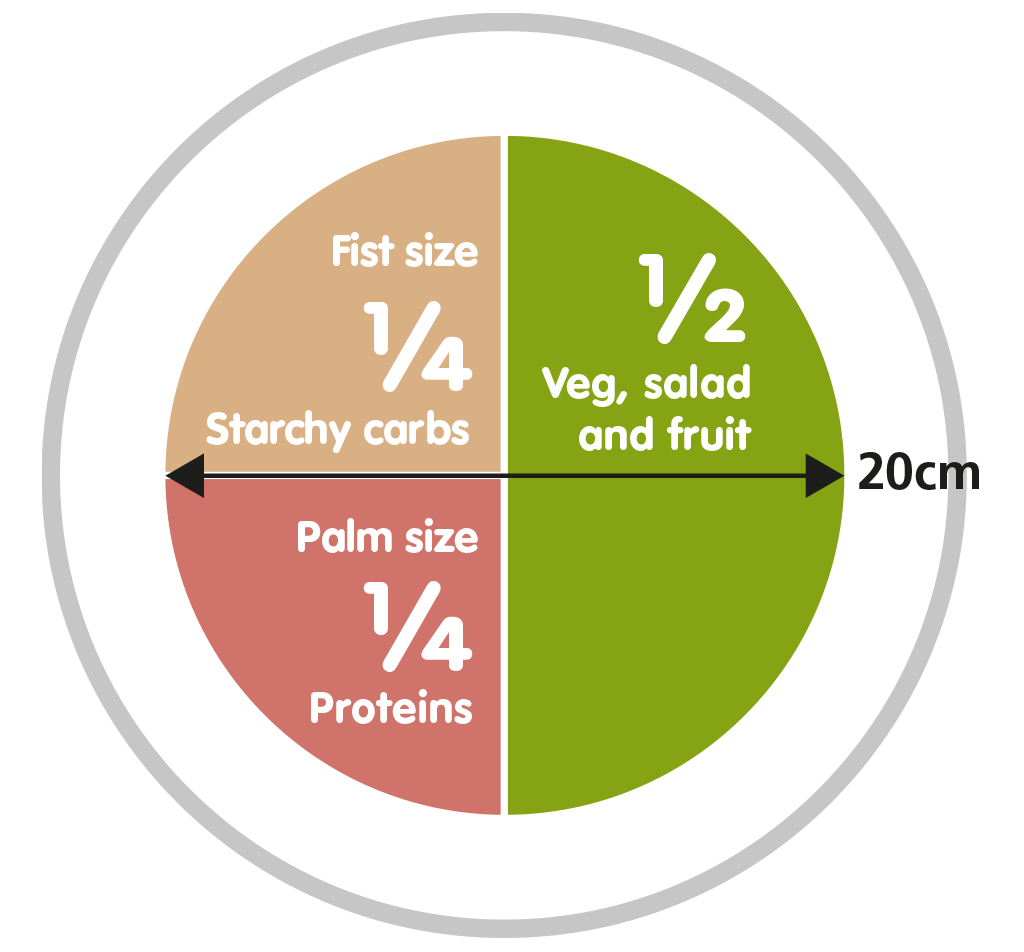
Adults and children should have at least five portions of a variety of fruit and vegetables every day. As a rough guide, one portion is the amount they can fit in the palm of their hand.
The amount of food a child needs varies with age, body size and levels of physical activity.
Useful tips:
- Start meals with small servings and let your child ask for more if they’re still hungry.
- Avoid making your child finish everything on the plate or eat more than they want to.
- Use smaller plates for younger children, as adult-size plates could encourage them to eat oversized portions.
- It may also help if you encourage your child to eat slowly and have set mealtimes. You can use mealtimes as an opportunity to catch up on what’s happened during the day.
- Explain to your child how to get the balance of their diet right using our weight loss plate (adapted from the Eatwell plate 2016 below). It shows how much we should all eat from each food group.

Veg, salad and fruit
Replace some starchy carbohydrates with more veg, salad and fruit. To boost fibre and feel fuller add beans/pulses.
Starchy carbs
Choose more complex carbs: wholegrain – cereal, rice, pasta and bread. Oats, potatoes (skin on).
Proteins
Leaner cuts of meat (remove visible fat eg chicken skin). More fish, including oily fish. Quorn, tofu, eggs and reduced fat cheese.
Highly processed sugary/fatty foods
Reduce intake to occasionally.
Dairy
Using reduced fat yoghurt/milk/cheese can help reduce calorie intake.
Additional information and support
NHS
- Physical activity guidelines for children and young people (search ‘physical activity guidelines’)
- Portion sizes (search ‘portion sizes’)
- Eatwell Guide (search ‘Eatwell Guide’)